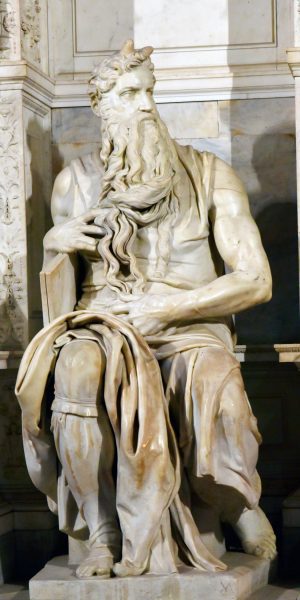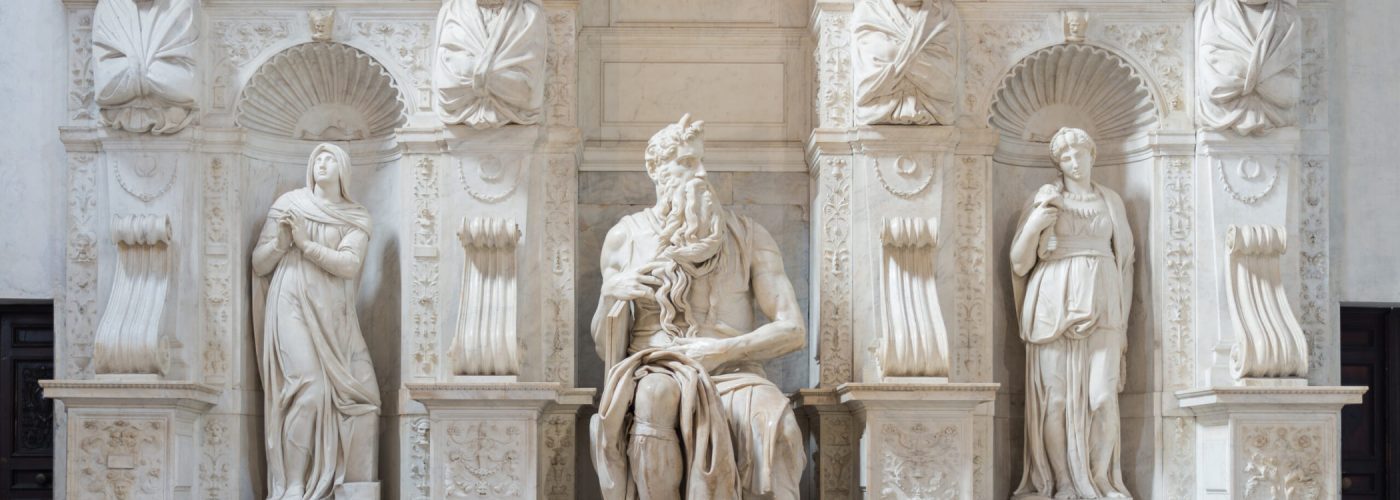The Hidden Gem of the Esquilino
When in Rome everyone pays a visit to the Colosseum but what many tourists do not realize is that there is much more to see in the close vicinity. Only a five minute walk from the Colosseum is the Basilica of Saint Peter in Chains. It is a gem located on the Oppian Hill, that anyone who goes to the Colosseum should make the time to see.
The church’s origins are from the fifth century, although it has undergone many restorations throughout the centuries. From the outside one would never imagine the treasures that lie within.
Once through the doors everyone is amazed by the grand space. There are ancient Doric columns on either side of the main aisle, which are older than the church itself.

Underneath the main altar is the centerpiece of the church, the chains that bound Saint Peter. Originally Peter was imprisoned in Jerusalem. These chains were given as a gift to Pope Leo the first. Legend has it that when he compared them to the chains that had bound Saint Peter at the Mamertine prison in Rome, the two sets of chains magically linked together, making them a very important relic

Aside from these holy chains, there is another reason why visitors to Rome seek out this church; Michelangelo’s statue of Moses. It is part of a symbolic tomb to Pope Julius the second, located to the right of the main altar. Though most remember him for his paintings, Michelangelo was an amazing sculptor and a workaholic. He worked on the sculpture for many years throughout his life, completing it in 1515. The church was the personal church of the Della Rovere family, the family of Pope Julius II and Julius himself commissioned Michelangelo to sculpt his tomb.
Michelangelo designed a grand tomb to be three tiers high with around 47 sculpted figures. Shortly after Michelangelo began, the Pope decided he would rather have him fresco the Sistine Chapel ceiling. Michelangelo preferred sculpting to painting and was quite agitated by this decision. Of course, when the Pope wants an artist to do something, they usually have to do it. After Michealangelo’s death, the greatly scaled down tomb was installed in the church, using Michelangelo’s Moses as the centerpiece.

One of the most surprising things about the Moses is that he is depicted with horns. Moses is usually depicted with enlightening rays of light shining from his temples. The word for ray in Hebrew is the same as the word for horn. It is interesting that Michelangelo chose the horns, and we can only speculate on the reason why. Maybe it was because of his agitated feeling towards the Pope. Since Michelangelo was a workaholic his emotions often came out in his artwork. Moses is extremely detailed and has a very intricate beard.
It has been said that when the director Cecil B. De Mille saw the Moses on a visit to Rome, he thought it had a striking resemblance to Charlton Heston, and this is the reason he cast him as Moses in The Ten Commandments film from 1956.
It is also interesting to have a look at the tombs on the left side of the basilica. There is even a beautiful seventh century mosaic of San Sebastian.
Anyone who finds themselves in the vicinity of the Colosseum would have no regrets from spending about twenty minutes of their day also visiting Saint Peter in Chains (San Pietro in Vincoli).



Recent Comments